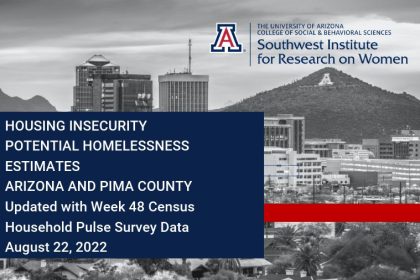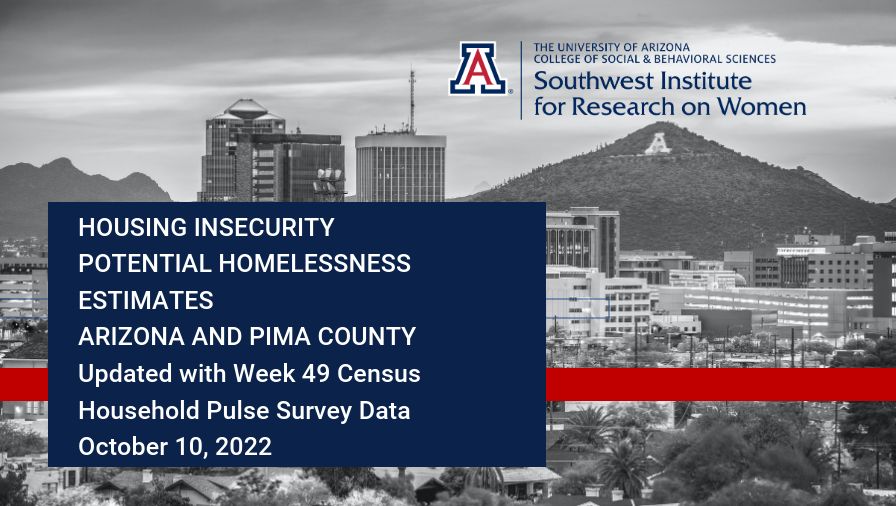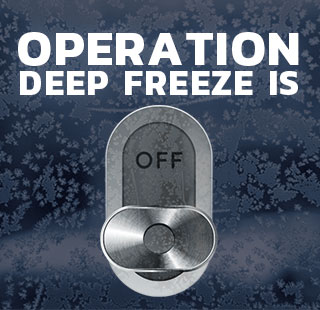

The University of Arizona Southwest Institute for Research on Women has released its thirty-seventh update to its report on Housing Insecurity Indicators and Potential Homelessness Estimates for Arizona and Pima County. This report measures current housing insecurity with newer census data. Without further analysis the causes of this locally are unclear, but the prime suspects are rising rents and the lingering aftermaths of the pandemic for the household budgets of lower-income households (via death, illness, and changes in employment and caretaking responsibilities).
Since the last census wave, there have been considerable improvements. Those include:
- Consistent with national trends, Tucson rent prices appear to be slowing their rate of increase substantially in recent months.
- Mortgage holders in Arizona continue to be in the best financial position we have seen in this survey to date. Only 2.8% reported being not current on mortgage payments and of those that are not current 79% see a foreclosure in the next two months as either “not very likely” or “not likely at all”.
The most recent update to the report also includes many indicators of concern worth noting.
- Most renters are being directly impacted by rising rent prices in Arizona.
- Renters have experienced 34-39% increases in average and median rents over the past two years.
- Statewide, 69% of Arizona renters reported an increase in their monthly rent in the last year and 53% reported an increase of $100 or more. This indicates that most renters are being directly impacted by recent increases in rent prices in Arizona.
- Measures of households not being current on rental payments and those experiencing great difficulty meeting spending needs indicate that low income households in Arizona are slipping behind (again).
- In the previous survey the vast majority of Arizona renters who are behind on their rent, 94%, were only 1 or 2 months behind on their payments. This fell to 52% of non-current renters only 1 or 2 months behind on their rent this wave. This suggests noteworthy erosion in financial position of renter households in Arizona in recent months.
- Eviction filings have been rising since April, and September had the largest monthly count of eviction filings observed since the onset of the pandemic.
- Racial/ethnic disparities in financial strain have increased in measures of households not being current on rental payments and experiencing difficulty meeting spending needs.
- Individuals (nationwide) reporting either a lot of difficulty or no ability to see or concentrate are disproportionately likely to report being behind on rent payments.
- It appears that members of historically marginalized groups (especially people living with disabilities) are not benefiting from the improving economy as quickly on average as other demographic groups.
- Generally, a falling unemployment rate is usually associated with reductions in eviction filings, but here we observe rising eviction filings in the context of very low and stable unemployment.


